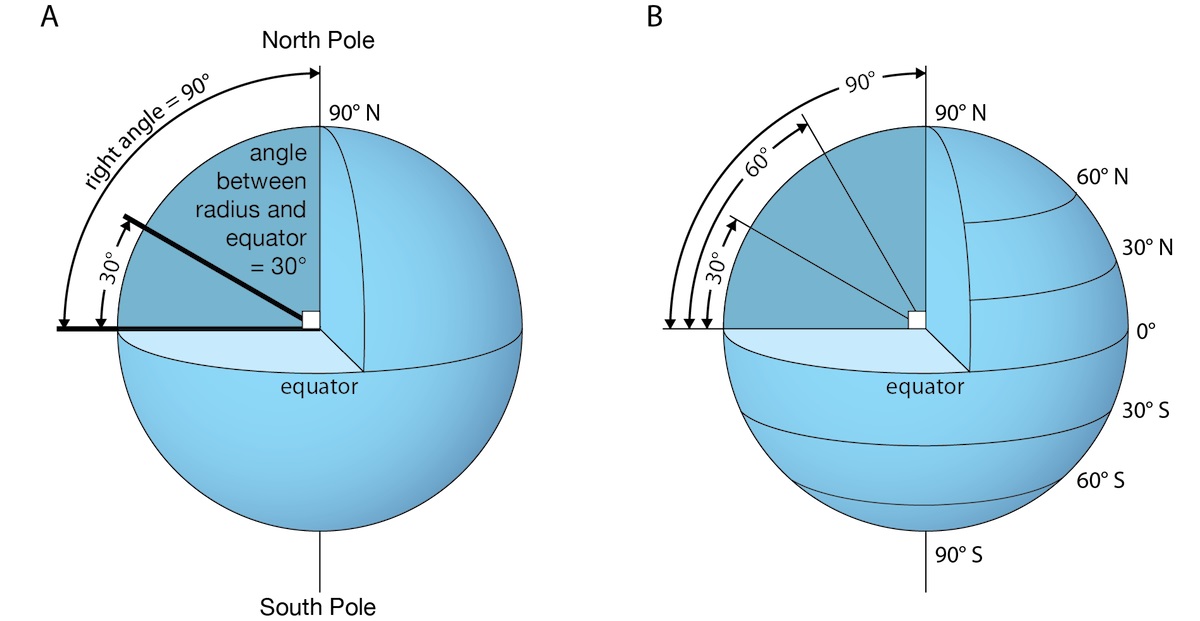
Latitude and longitude are important geographic coordinates that help us locate places on the Earth’s surface. They provide us with a precise way to identify specific points, from the vast oceans to bustling cities. Understanding latitude and longitude is not only useful for navigation, but it also plays a crucial role in various fields like cartography, meteorology, and even search engine optimization. In this article, we will dive into 20 fascinating facts about latitude and longitude that will expand your knowledge and enhance your understanding of our planet’s coordinates. From the Greenwich Meridian to the international dateline, from the equator to the poles, let’s embark on a journey of discovery through the world of latitude and longitude.
Key Takeaways:
- Latitude and longitude are imaginary lines that help us find places on Earth. They’re like a giant grid that helps us know where we are and how to get where we want to go.
- The Equator and Prime Meridian are like the starting points of a treasure map. They help us measure how far north or south, and east or west, a place is.
The Equator is the starting point for measuring latitude.
The Equator is an imaginary line that divides the Earth into Northern and Southern Hemispheres. It serves as the zero-degree latitude line, from which all other latitudes are measured.
Longitude is measured from the Prime Meridian.
The Prime Meridian, located in Greenwich, London, is the starting point for measuring longitude. It serves as the zero-degree longitude line, from which all other longitudes are measured.
The North Pole has a latitude of 90 degrees North.
The North Pole is the most northerly point on Earth and is located at a latitude of 90 degrees North. It marks the northern end of the Earth’s axis of rotation.
The South Pole has a latitude of 90 degrees South.
The South Pole is the most southerly point on Earth and is located at a latitude of 90 degrees South. It marks the southern end of the Earth’s axis of rotation.
Latitude lines run horizontally across the Earth.
Latitude lines, also known as parallels, are imaginary lines that run horizontally across the Earth from east to west. They indicate the distance north or south of the Equator.
Longitude lines run vertically from the North Pole to the South Pole.
Longitude lines, also known as meridians, are imaginary lines that run vertically from the North Pole to the South Pole. They indicate the distance east or west of the Prime Meridian.
The Tropic of Cancer has a latitude of approximately 23.5 degrees North.
The Tropic of Cancer is a latitude line located at approximately 23.5 degrees North. It marks the northernmost point where the Sun can appear directly overhead at noon.
The Tropic of Capricorn has a latitude of approximately 23.5 degrees South.
The Tropic of Capricorn is a latitude line located at approximately 23.5 degrees South. It marks the southernmost point where the Sun can appear directly overhead at noon.
The Arctic Circle is at a latitude of approximately 66.5 degrees North.
The Arctic Circle is a latitude line located at approximately 66.5 degrees North. It marks the southernmost point where the Sun can remain continuously above or below the horizon for 24 hours.
The Antarctic Circle is at a latitude of approximately 66.5 degrees South.
The Antarctic Circle is a latitude line located at approximately 66.5 degrees South. It marks the northernmost point where the Sun can remain continuously above or below the horizon for 24 hours.
Latitude and longitude are coordinates used for navigation and mapping.
Latitude and longitude provide a precise way to determine the position of any point on Earth’s surface. They are essential for navigation, cartography, and GPS systems.
Latitudinal lines are parallel to each other.
Latitudinal lines, or parallels, are parallel to each other and do not intersect. They maintain the same distance from each other as they circle the Earth.
Longitudinal lines converge at the North and South Poles.
Longitudinal lines, or meridians, converge at the North and South Poles. At these points, they meet and form a single point of reference.
Latitude is measured in degrees, minutes, and seconds.
Latitude is measured in degrees, minutes, and seconds. Degrees represent the largest unit, minutes are smaller divisions of a degree, and seconds are even smaller subdivisions.
Longitude is measured in degrees, minutes, and seconds.
Longitude is also measured in degrees, minutes, and seconds. Just like latitude, degrees represent the largest unit, minutes are smaller divisions, and seconds are the smallest subdivisions.
The Prime Meridian passes through Greenwich, London.
The Prime Meridian, which serves as the zero-degree longitude line, passes through Greenwich, London. It was established in 1884 during the International Meridian Conference.
GPS uses latitude and longitude to determine precise locations.
Global Positioning System (GPS) technology relies on latitude and longitude coordinates to pinpoint exact locations on Earth’s surface. This enables accurate navigation and tracking.
Latitude affects climate and weather patterns.
The Earth’s latitude plays a crucial role in determining climate and weather patterns. Factors such as the angle of the Sun’s rays and the distance from the Equator influence temperature and precipitation.
Longitude is used to calculate time zones.
Longitude is essential for determining time zones around the world. Each 15-degree increment of longitude represents one-hour difference in time.
The intersection of latitude and longitude provides a unique location on Earth.
By combining latitude and longitude coordinates, we can identify a specific point on Earth’s surface. This intersection provides a unique location that can be used for navigation, mapping, and addressing.
Conclusion
In conclusion, latitude and longitude are crucial components of geographic coordinates that help us locate specific points on Earth’s surface. They provide a universal system for identifying locations and are used extensively in navigation, mapmaking, and GPS technology. Understanding latitude and longitude can greatly enhance our understanding of the world around us and allow us to effectively communicate and navigate across the globe.By learning about latitude and longitude, we can appreciate the precision and accuracy that goes into mapping our planet. It’s fascinating to know that these coordinates have been instrumental in shaping our understanding of geography and have been used for centuries to explore uncharted territories.So, the next time you look at a map or use a GPS device, take a moment to appreciate the significance of latitude and longitude. It’s incredible to think that these measurements have revolutionized the way we navigate and explore our planet.
FAQs
1. What is latitude?
Latitude is the angular distance measured in degrees north or south of the Equator. It helps determine how far north or south a location is from the Earth’s Equator.
2. How is longitude calculated?
Longitude is the angular distance measured in degrees east or west of the Prime Meridian. It helps determine how far east or west a location is from the Prime Meridian, which runs through Greenwich, London.
3. Why do we use latitude and longitude?
Latitude and longitude provide a standardized system for locating places on Earth’s surface. They allow for precise and accurate navigation, mapmaking, and GPS technology.
4. How do latitude and longitude affect climate?
Latitude plays a significant role in determining climate. The angle at which the sun’s rays hit the Earth’s surface varies with latitude, influencing temperatures and weather patterns.
5. Can latitude and longitude help in finding specific locations?
Yes, latitude and longitude are essential for determining precise locations on Earth. They enable us to pinpoint coordinates and accurately locate places on maps or GPS systems.
6. Are latitude and longitude the same all around the world?
Yes, the concept of latitude and longitude remains the same across the globe. However, the values change based on the specific location being measured.
7. Did latitude and longitude always exist?
No, latitude and longitude as we know them today were developed over time as a standardized system for geographic coordinates. Ancient civilizations used various methods to determine location, but the modern system we use today took shape over centuries.
Was this page helpful?
Our commitment to delivering trustworthy and engaging content is at the heart of what we do. Each fact on our site is contributed by real users like you, bringing a wealth of diverse insights and information. To ensure the highest standards of accuracy and reliability, our dedicated editors meticulously review each submission. This process guarantees that the facts we share are not only fascinating but also credible. Trust in our commitment to quality and authenticity as you explore and learn with us.


